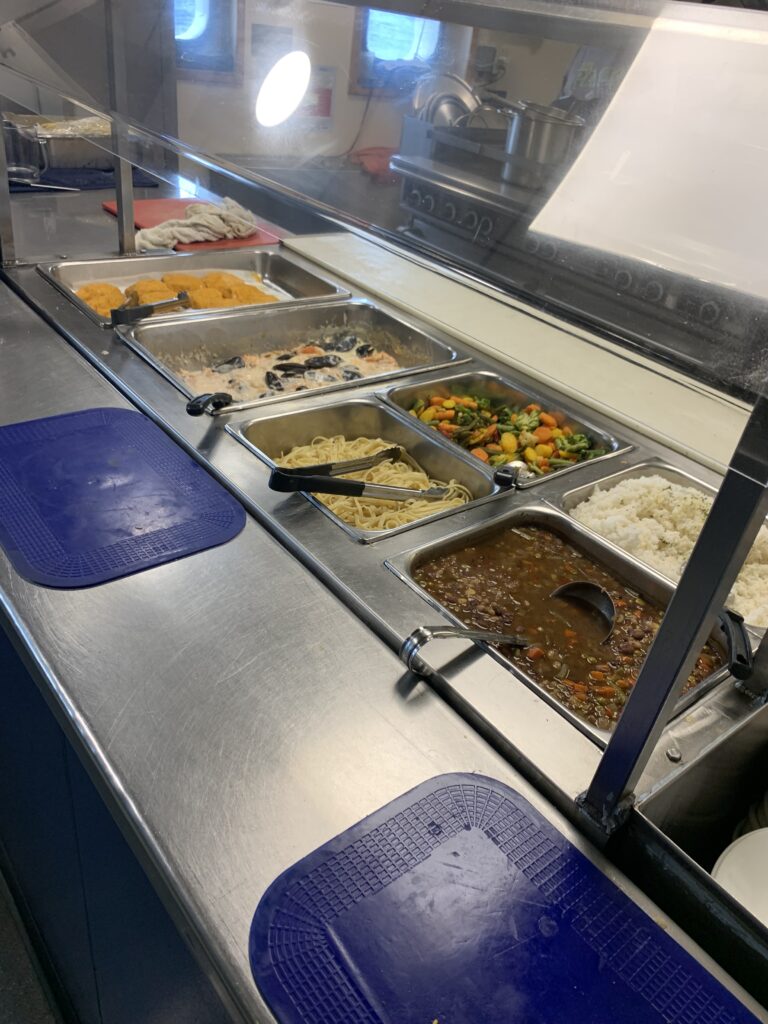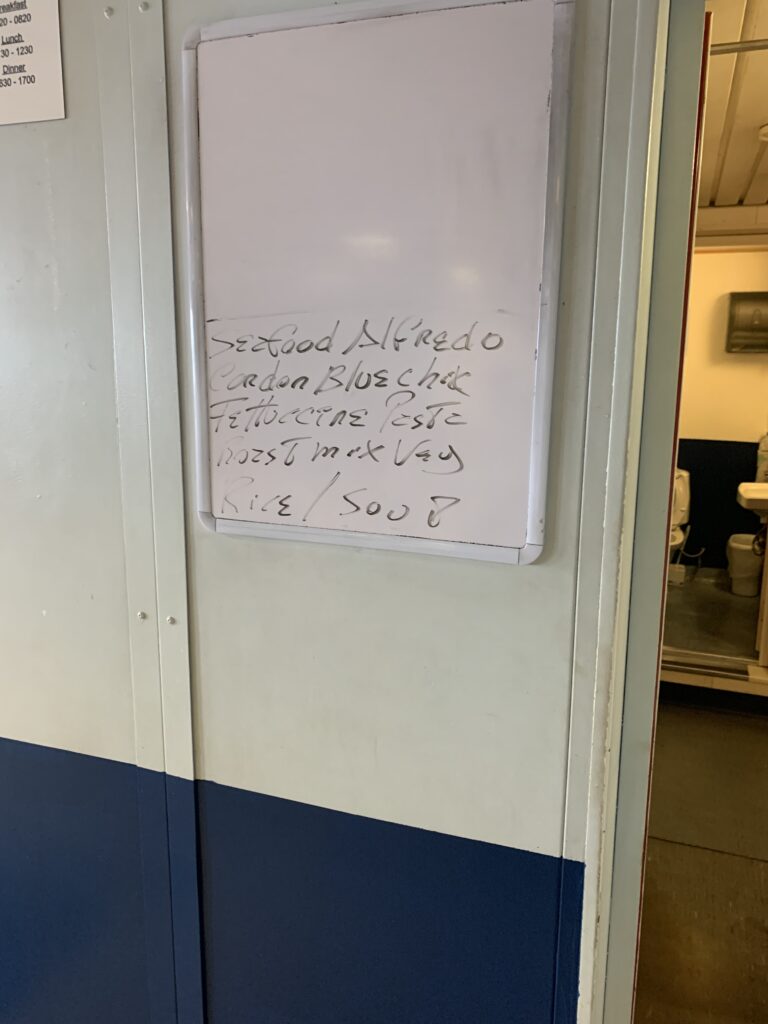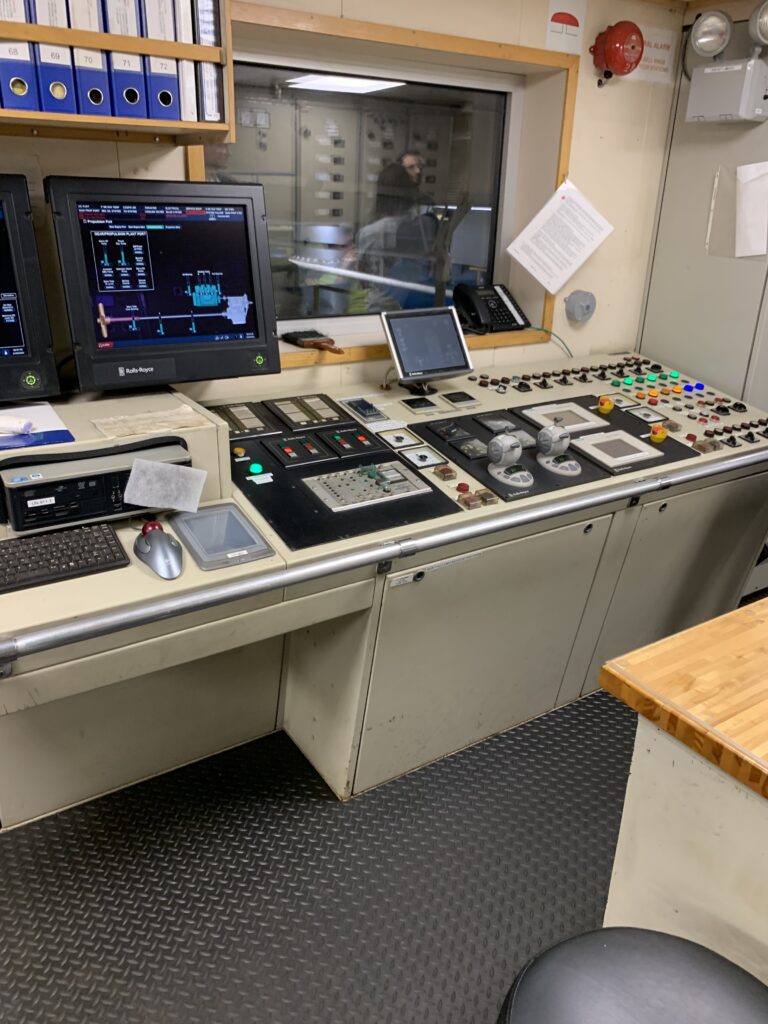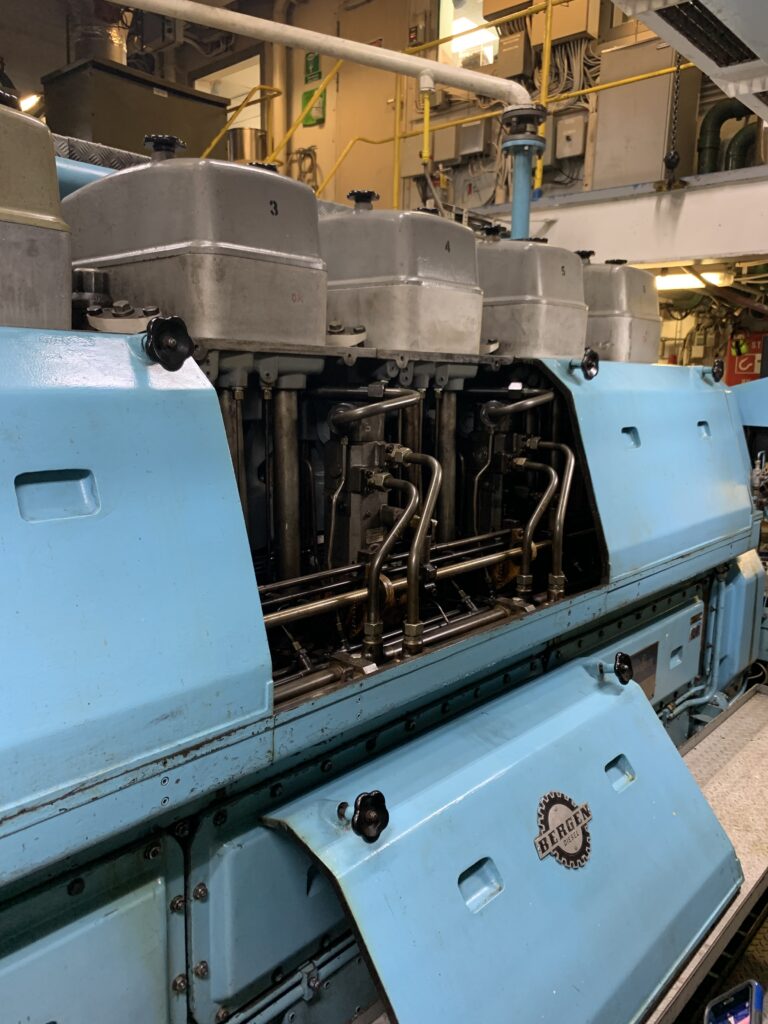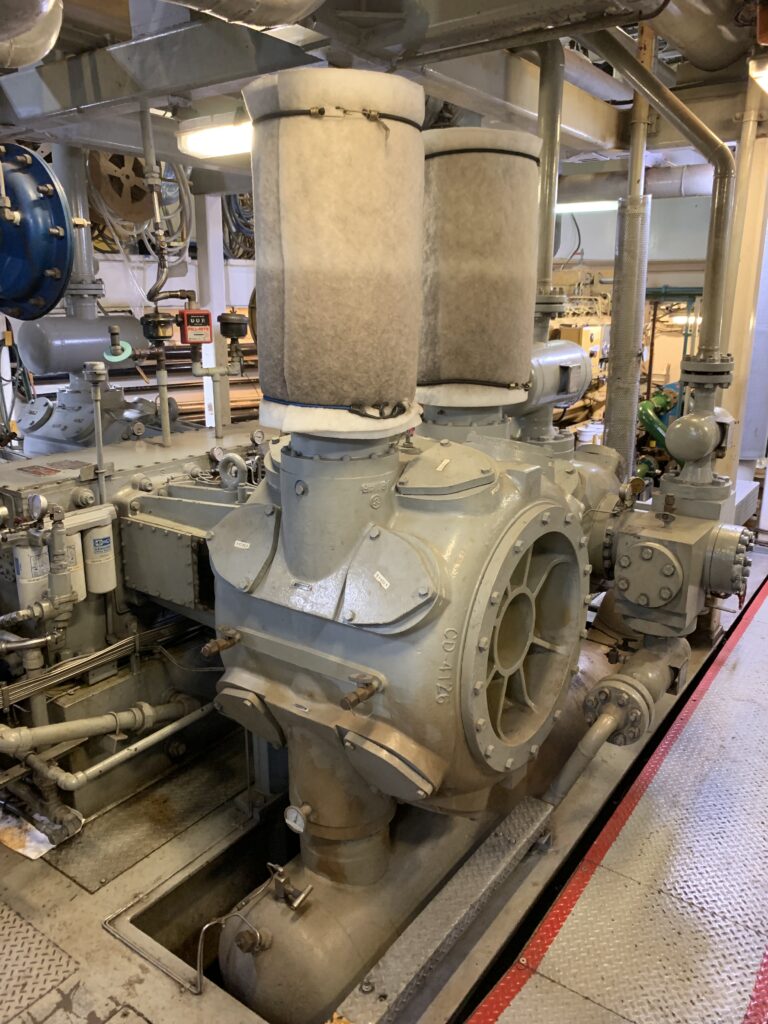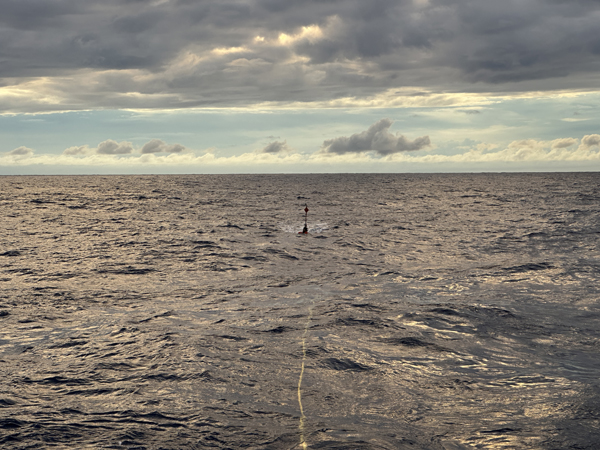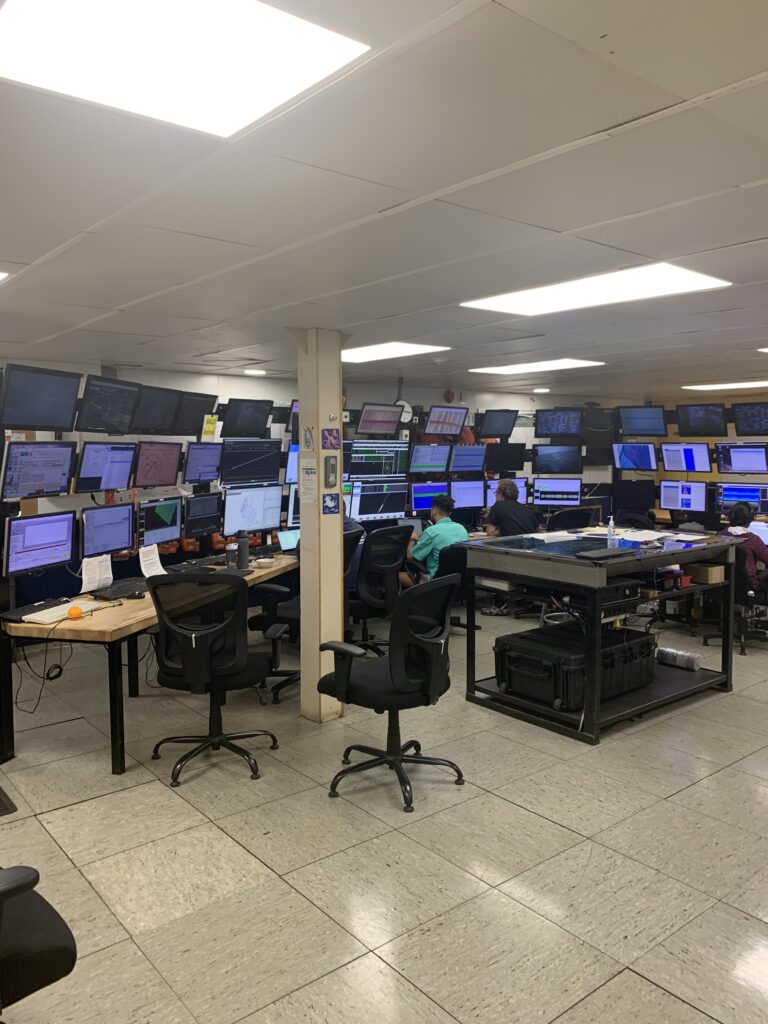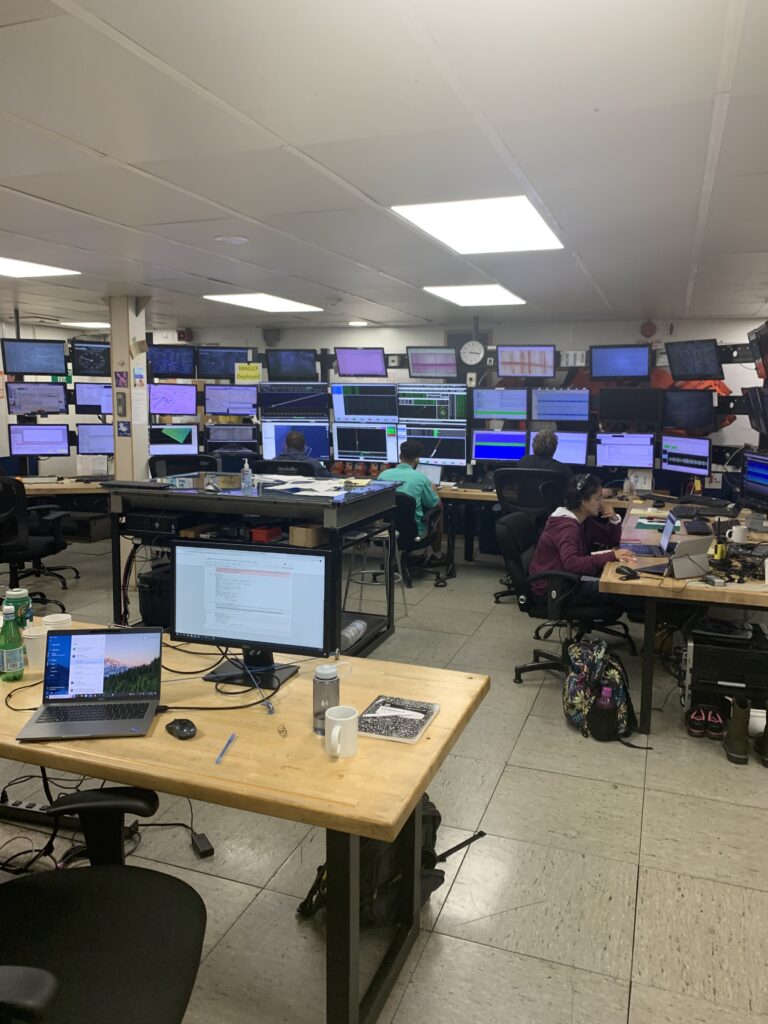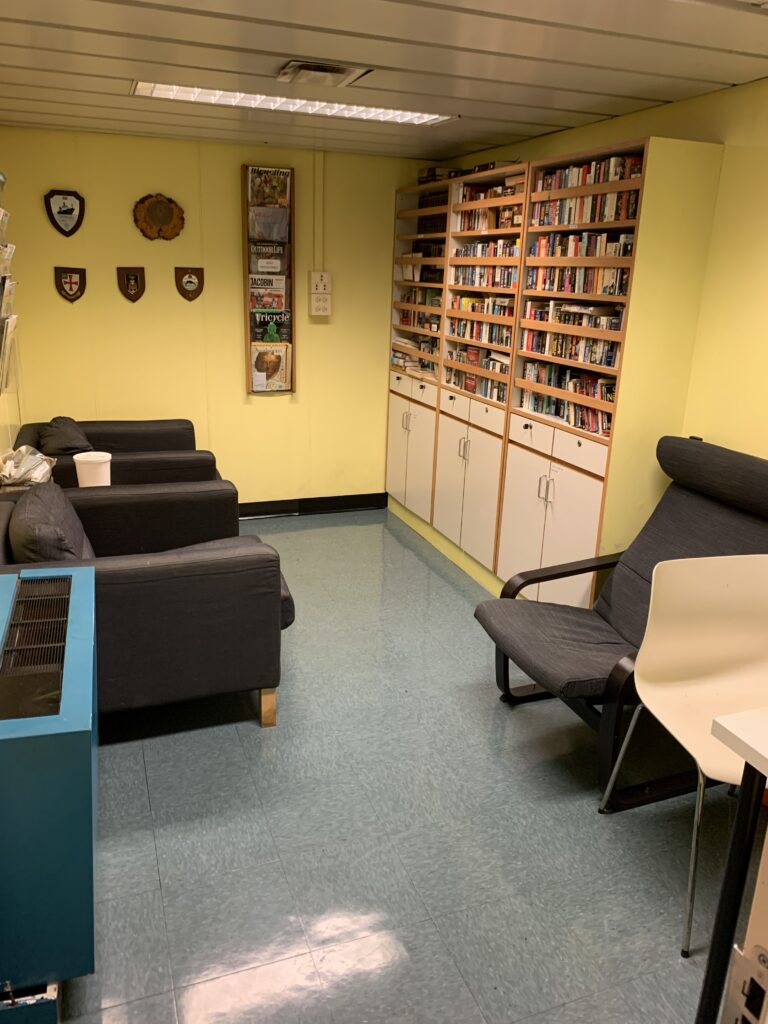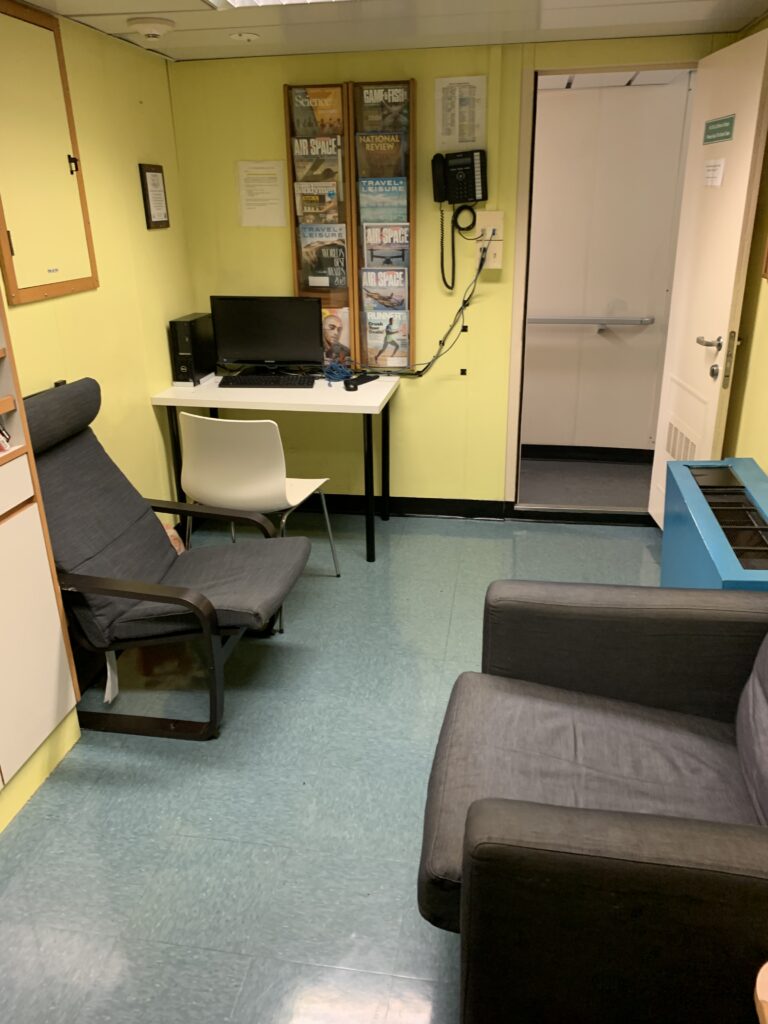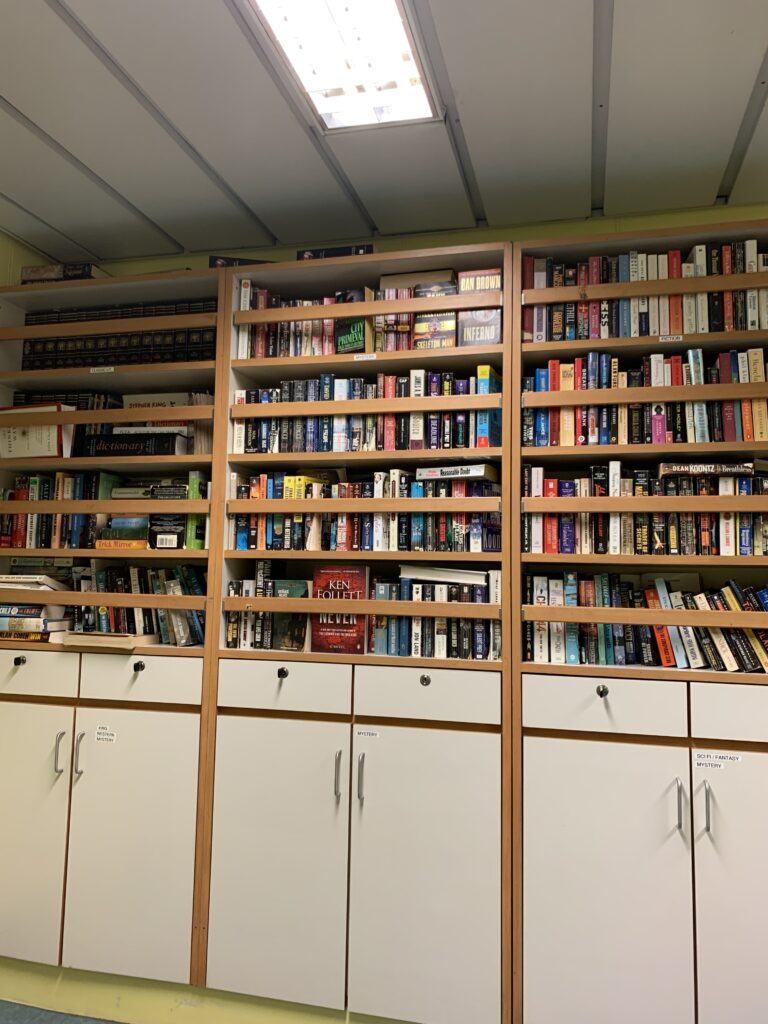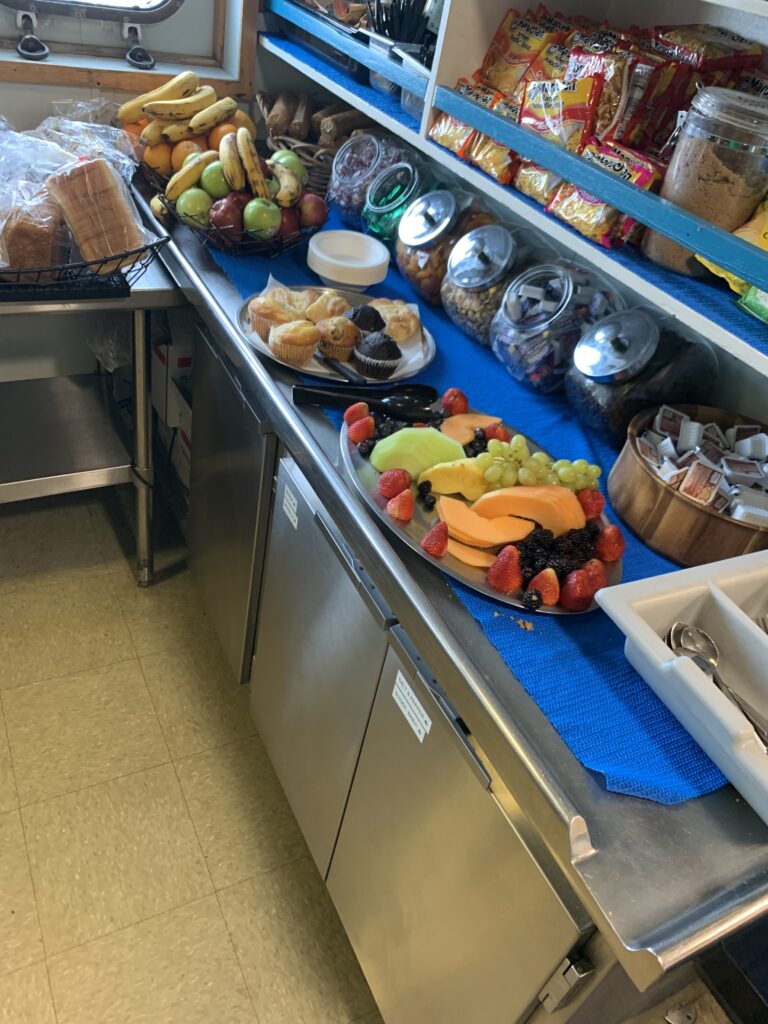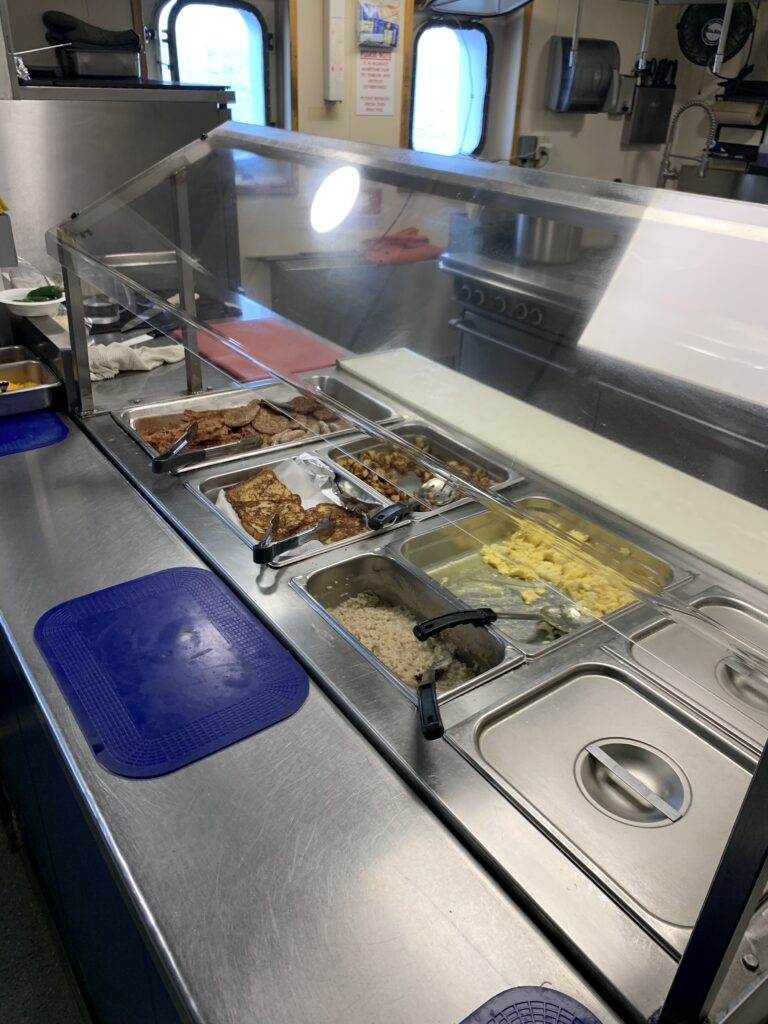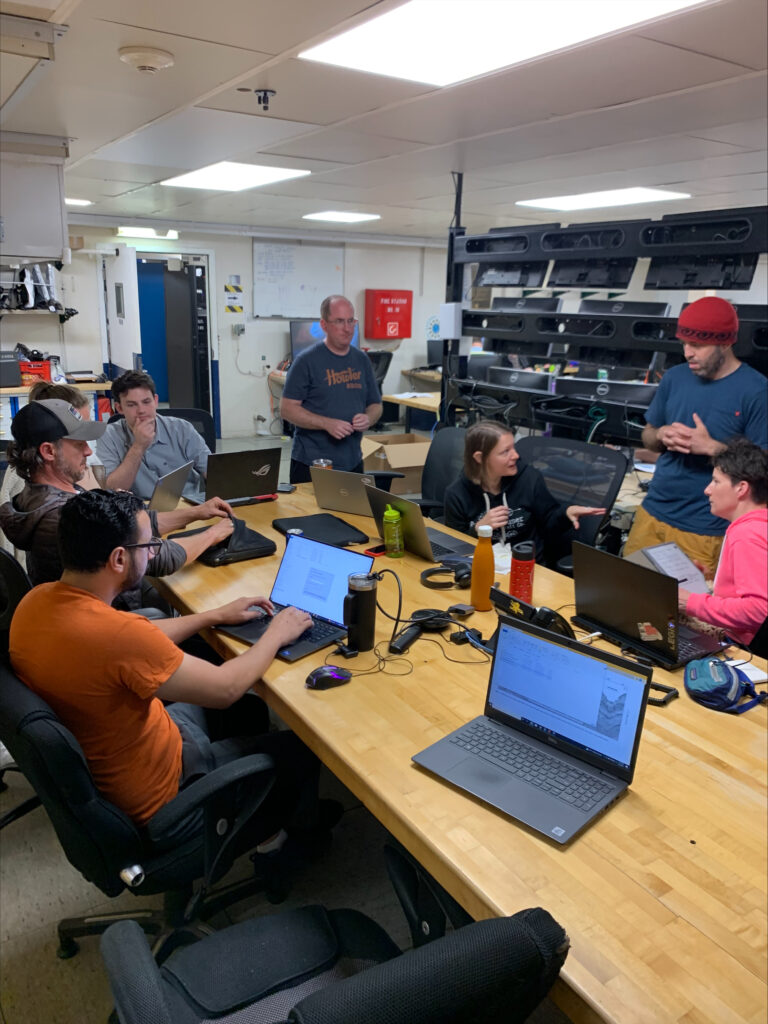Our French students have this to say about the trip so far:
Bonjour tout le monde!! (It means Hello everyone in French)
Here is a quick first impression from the point of view of some French students (but mainly the point of view of some Master’s students on a scientific campaign).
Since the beginning of the trip, which was only four days ago, we have learned a lot about multibeam and echosounder acquisition (which are typically sonars).
Our current job is to analyze, using Ifremer’s software “Globe”, the water column data acquired using the echosounder EM122. So far, we managed to find a reflective plume coming out of the seafloor on the 05/10 data which was reassuring since there was a shutdown of the acquisition a few minutes before. We were very happy about this discovery!
Our tasks mainly take place during night shifts, from 00:00 until 10:00 AM, an interval during which are also present: our P.I, Jo, Gilles, the IT specialist, and Koray, the Navigation Master. We also had the chance of meeting Cassi, Kristal, Daniela and Jo-Ann, the Wildlife Watcher’s Team. Consequently, we tend to sleep a lot during the day, but we always make sure to be awake for lunch and at least save a plate in case we miss dinner.
Naturally, we had (and still have!) a lot of questions for the scientific team, most of whom were eager to answer us.
As said earlier, it’s been only less than a week since our Departure from Norfolk, VA and we can’t wait to see what the rest of the cruise has in store for us!
